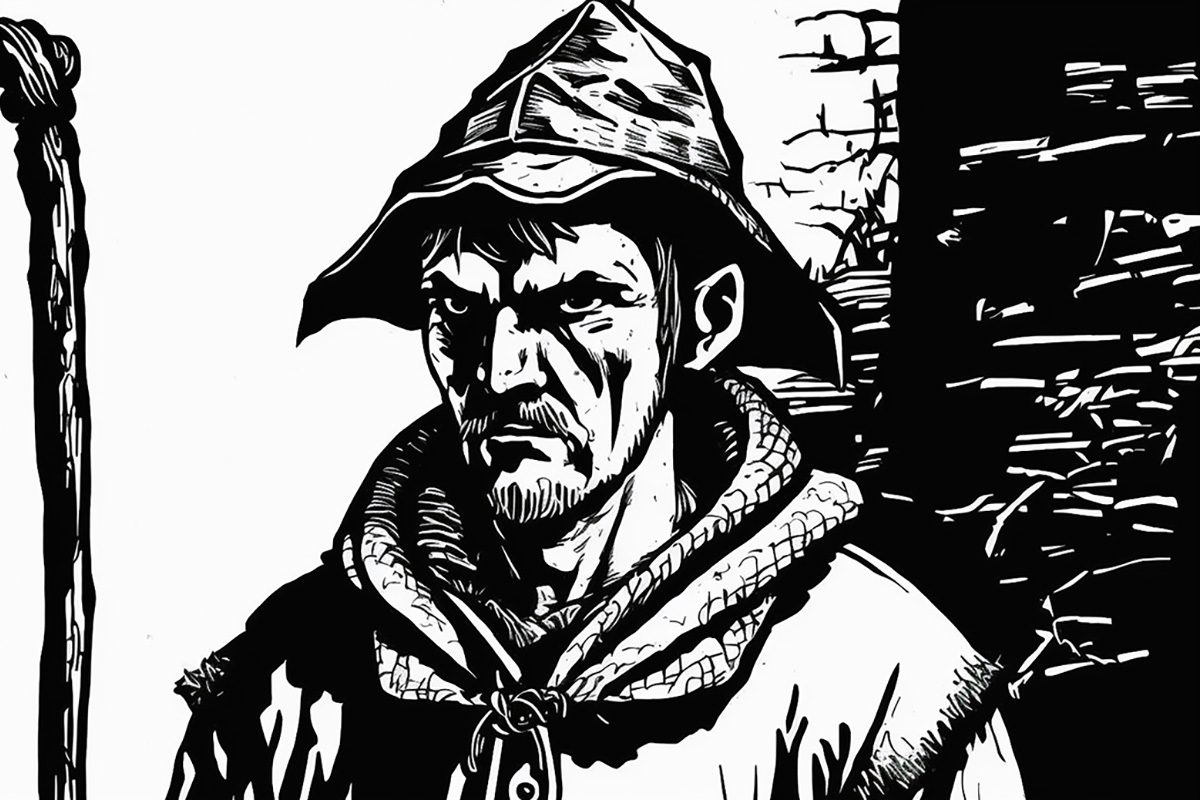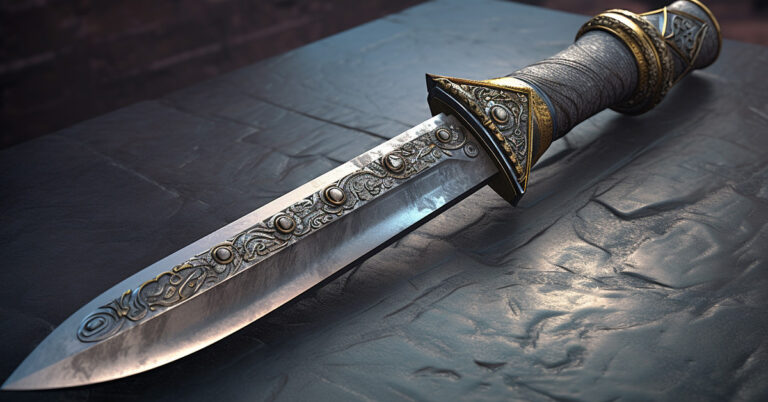Table of Contents
What is a simple weapon in 5e?
When it comes to bashing, slashing and poking your enemies, the Player’s Handbook divides up weapons into simple and martial categories. Simple weapons are generally considered easy to use and don’t require specialised training to wield effectively. Think of the peasant wielding their mighty pitchfork, or simply that untrained caravan driver using their club in self-defence.
Which weapons in 5e are simple weapons?
Simple weapons are themselves categorised into melee and ranged. Below we have summarised all melee and ranged simple weapons including their damage die, damage type and properties as specified by the Player’s Handbook.
Simple melee weapons in 5e
| Weapon | Damage die | Damage type | Properties |
| Club | 1d4 | Bludgeoning | Light |
| Dagger | 1d4 | Piercing | Finesse, light, thrown (range 20/60) |
| Greatclub | 1d8 | Bludgeoning | Two-handed |
| Handaxe | 1d6 | Slashing | Light, thrown (range 20/60) |
| Javelin | 1d6 | Piercing | Thrown (range 30/120) |
| Light Hammer | 1d4 | Bludgeoning | Light, thrown (range 20/60) |
| Mace | 1d6 | Bludgeoning | – |
| Quarterstaff | 1d6 | Bludgeoning | Versatile (1d8) |
| Sickle | 1d4 | Slashing | Light |
| Spear | 1d6 | Piercing | Thrown (range 20/60), versatile (1d8) |
Simple ranged weapons in 5e
| Weapon | Damage die | Damage type | Properties |
| Crossbow, Light | 1d8 | Piercing | Ammunition (range 80/320), loading, two-handed |
| Dart | 1d4 | Piercing | Finesse, thrown (range 20/60) |
| Shortbow | 1d6 | Piercing | Ammunition (range 80/320), two-handed |
Simple weapons or martial weapons?
While simple weapons are easy to use and widely available, martial weapons typically offer more damage potential and versatility in combat. Martial weapons often have unique properties and require specialised training to wield effectively. However, not all characters have access to martial weapon proficiencies, making simple weapons a practical and reliable choice for many adventurers.

Which classes have simple weapons proficiency?
Most classes in 5e are proficient with simple weapons, as they represent the basic combat skills that many adventurers possess. The following classes have proficiency with all simple weapons:
- Artificer
- Barbarian
- Bard
- Cleric
- Fighter
- Monk
- Paladin
- Ranger
- Rogue
- Warlock
Classes with limited simple weapons proficiency
The more cerebrally-inclined and noodle-armed classes, such as Druids, Sorcerors and Wizards can’t wield the full range of simple weapons in 5e.
- Druids have simple weapons proficiency with clubs, daggers, darts, quarterstaffs, and sickles.
- Sorcerers have simple weapons proficiency with daggers, darts, slings, quarterstaffs, and light crossbows.
- Wizards have simple weapons proficiency with daggers, darts, slings, quarterstaffs, and light crossbows.
What is the best simple weapon in 5e?
As different weapons may excel in specific situations or align with certain character builds, we will consider the following factors when choosing the best simple weapon in 5e:
- Damage output: Consider the weapon’s damage die and damage type, as they can influence the overall effectiveness of the weapon in combat.
- Range: For ranged weapons, evaluate the weapon’s normal and long range, which can affect your ability to engage enemies from a distance.
- Versatility: Some weapons offer versatile properties, allowing them to be used in multiple ways or with different damage types, providing flexibility in combat.
- Availability of ammunition: Some DMs will expect players to keep track of and be limited by ammunition. Ranged weapons that require ammunition, such as crossbows and slings, may necessitate additional resources and inventory management.
Strongest simple weapons in 5e
#1 Quarterstaff: With its versatile property, the quarterstaff can be used as a one-handed or two-handed weapon, dealing 1d6 or 1d8 bludgeoning damage, respectively. This gives it some of the highest base damage for a simple melee weapon, and the ability to use your other hand if needed.
#2 Javelin As a versatile weapon, the javelin can be used for both melee and ranged attacks, dealing 1d6 piercing damage with a range of 30/120 feet. This can be very helpful if you need to make a quick decision to keep your distance and don’t want to waste time getting a different weapon ready.
#3 Light Crossbow: If you’re using simple weapons, you’re probably not built for melee combat. With a respectable damage die of 1d8 piercing damage and a range of 80/320 feet, the light crossbow is a popular choice for ranged combatants.
#4 Dagger*: Finesse weapons also play a critical role for characters that utilise the Sneak Attack class feature as they require the use of a finesse or ranged weapon to trigger this additional damage. In this context, simple finesse weapons like daggers can come out as one of the strongest simple weapons. If your Rogue has been captured and lost their weapons, the dagger should be a first choice to pick up.
Which simple weapons have the finesse property?
The dagger and dart both have the finesse property and can be used to trigger Sneak Attack, along with the crossbow and shortbow ranged weapons.
Hide behind the meat shield!
Hopefully, this guide has given you a fighting chance of making it out of an encounter if you’re having to use simple weapons. Of course, the best advice is always to hide behind the two-weapon-wielding sentinel if you’re limited to engaging with simple weapons.

